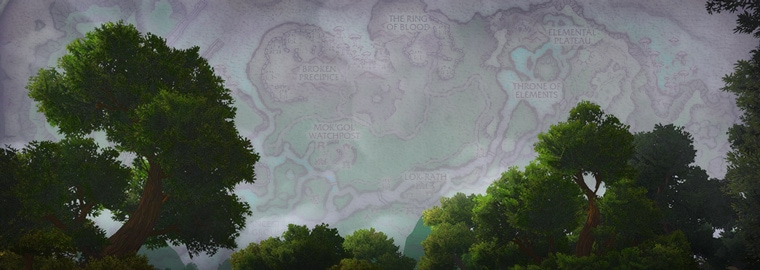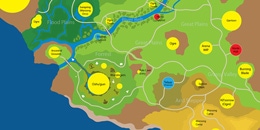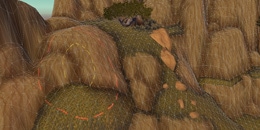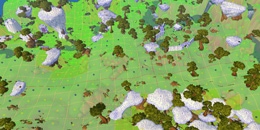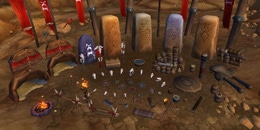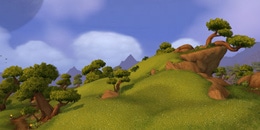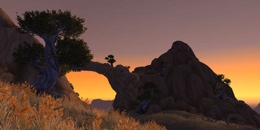Hi again, I’m World of Warcraft senior art director Chris Robinson. In this third installment of this Artcraft series, senior level designer Ely Cannon explains a bit more about the level designer’s role in bringing World of Warcraft’s landscape to life.

Hi, I’m Ely Cannon, a senior member of the level design team for World of Warcraft, and I wanted to talk a little about the role that World of Warcraft level designers play in developing the visual style for our zones. On the WoW team, we look for artists who also have design experience, or designers with art skills, for our level design team. This is essential to our process since each level designer is ultimately the gatekeeper for the visual style and tone of the zone he or she is working on.
This process starts with the pre-production work for a zone. Working with an environment artist, the level designer will help guide and define the scope of environment assets needed. These assets include terrain textures, trees, bushes, accent plants, rocks, etc. The range of models and textures needed must address not only the main zone look, but the sub-environment types needed to break up the zone. Not only that, but the textures must do this all while bringing the concept to life and remaining within the capabilities of our game engine. It can be a challenge, and often is.
Take, for example, the new Nagrand. Not only does it encompass the environment that you know of as the Nagrand from Outland, but it also contains new areas, like a wetlands and a higher-elevation arid region. These disparate environmental themes could clash quite jarringly if not handled with care. To keep the zone’s development moving in the right direction, the level designer and the environment artist need to constantly discuss shape language, color, diversity, scale, mood, model usage, and ultimately, the visual tone of the zone as a whole.
The environment artists make the models and textures, and the level designer sculpts and paints the terrain, places the trees, rocks, and bushes—all the while considering gameplay and both the art and design direction. A typical day for our level designers will include decisions about the overall look and feel of a zone, as well as paying finite attention to detail, like how one plant looks when placed next to another plant in the scene.
Nagrand in Warlords of Draenor is a good example of the color relationships between textures. The vast sweeping savannahs of verdant green which make up a large portion of Nagrand presented a particular challenge: how can we get color depth into massive green fields while staying true to the concept? At first glance, the fields and rolling hills seem to be simply green grass—and lots of it. On closer inspection, you’ll notice a carefully selected range of green tones used to render the savannahs of Nagrand. Each of the green tones is a unique grass texture which is meticulously blended with the others in the set to create the effect seen in-game. Likewise, the sub-zones in Nagrand diverge from the main zone color scheme in very specific ways. These were defined early in the process to ensure that players would experience a diverse range of environment types while playing through the zone, and ultimately when they return for max-level content.
Our artists and designers work together to build and iterate on zones quickly, creating huge play areas with a consistent level of visual quality. In the last segment of this Artcraft series, you’ll learn more about Nagrand and the challenges in building the zone from five of our level designers: Victor Chong, Ian Gerdes, Ed Hanes, Damarcus Holbrook, and Kevin Lee.



